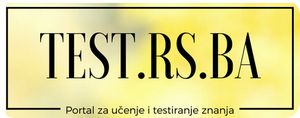Republic of Srpska is very rich in natural resources, most notably in good-quality and unpolluted agricultural land (especially suitable for the production of organic food), forests, and electric energy potential.
Agricultural potential
Total area of agricultural land in the Republic of Srpska is 1.299.000 ha (51.4% of territory in Bosnia and Herzegovina), which, against the size of the population, makes approximately one hectare per capita, which is above the world average (0,24 ha per inhabitant) and the European average (0,40 ha per capita). Clean air, land and water provide favorable conditions in the RS for the production of organic food. Planes in the south and westward from the river Sava provide ideal conditions for cultivating wheat, corn and vegetables, industrial plants, such as flax and hemp. Land is not polluted with chemical fertilizers and pesticides. The biggest potential lies in cattle farming and meat industry, chicken farming and egg production, as well as fruit and vegetable production.
All these conditions provide excellent environment for growing a wide range of plants and animals, with the possibility of harvesting crops and fruits up to three times a year, on the same land depending on the culture.
According to the statistics from the beginning of 2010, there are almost 14 million trees of plum, pear, apple and other fruits in the Republic of Srpska, which could be exported and used for the production of fruit juice. Availability of organic products and clean water, explains why international food producers and distributors recognize the value of this sector.
For centuries, the warmer areas in Herzegovina have been the center of wine production, tobacco growing, as well as of lavender and other aromatic plants growing.
Republic of Srpska is also well known for its high-quality medicinal herbs, which are used in pharmaceutical and cosmetics industry.
Fish farms are developed in clean, unpolluted rivers that run through the country.
Potential in forestry
According to the absolute forest cover rate (40%) and the total stock volume in the net increase of wood stock volume, the Republic of Srpska takes a significant place in Europe. Also, relative forest cover rate is, compared to the neighboring countries, very high, 0,67 ha per capita. Wood stock volume can be used for the production of furniture and for the construction industry. These forests have the potential to yield almost seven million m³ of roundwood per year on a sustainable basis. Beech, oak, ash, pine tree and fir, as well as walnut tree, apple tree and sour cherry tree are exported as raw materials, semi-final products and final products.
Large quantities of hard and soft wood, as well as cheap, skilled workforce in combination with existing production facilities with the capacity for wood processing and production of furniture that exceeds domestic demand make this sector export oriented.
Currently, the largest markets for these products are Germany and Italy, but there is also large potential for export to other countries.
Electric energy potential
From the point of view of hydrology, the territory of the Republic of Srpska may be assessed as rich in surface and ground water resources. All major rivers belong to the Black Sea basin. Backbone of the Black Sea basin is the river Sava which runs through low ground, so all major rivers flow into it – rivers Una and Sana, Vrbas, Ukrina, Bosna and Drina. They all have a composite character of river valleys with large slopes, and provide significant hydro energy potential. In this respect, of special importance is the river Drina which has the most developed hydrologic system and huge hydro energy potential which is still underexploited. Other rivers are also significant for the economy.
Hydrographic river network of the Republic of Srpska is complemented by the largest and most significant river in east Herzegovina – Trebisnjica river, whose hydrographic potential is almost fully exploited. This river, as well as almost the entire ground karst hydrographic network, belongs to the Adriatic basin.
Current exploitation of the total potential for the production of electric energy in the Republic of Srpska is around 30%, which speaks about the possibilities for investing into and developing this sector further. Installed power of currently available electric energy capacities in the Republic of Srpska is around 1300 МW, which should become three times larger after the realization of several capital projects (thermal power plant Stanari, as well as Ugljevik; hydro power plant on the river Drina; hydro power plant on the river Trebisnjica, etc.). Research conducted in the 80s identified around 120 locations for building small hydro power plants (some of the rivers run along the border line) with total installed power of around 340 МW and the average annual production of 1400 GWh.
Moreover, Republic of Srpska has large potential in the exploitation of renewable energy sources, such as wind power, solar energy, biomass energy and geo-thermal energy.
Republic of Srpska, especially its southern part, has been recognized as an excellent area for building wind power plants. In accordance with research conducted by domestic and international experts, wind potential of the Republic of srpska has by 30% larger usability coefficient than the EU average.
Furthermore, Republic of Srpska has significant reserves of brown coal, lignite and peat, whose estimated quantities exceed 4 billion tons. Two main reserves of coal are in Krajina, in Gacko basin.
Established reserves of brown coal, lignite and peat offer numerous possibilities for investors in construction projects of new coal mines and new thermal plants, as well as plants for the production of liquid fuel from peat.
Furthermore, In Banja Luka, on the occasion of the anniversary of oil and gas exploration at the territory of the Republic of Srpska, a public presentation of the results that the company “Jadran Naftagas” achieved until present was held, and the drilling of the first exploration well in this region was announced.
Exactly a year ago, on 26 September 2011, the company “Jadran Naftagas” (a joint venture of NIS and Russia’s Zarubezhneft) and the Ministry of Industry, Energy and Mining signed a concession agreement for the exploration or exploitation of hydrocarbons (crude oil and gas) at the territory of the Republic of Srpska. The concession was obtained for a period of 28 years (three years for exploration and 25 years for exploitation).
Based on this agreement “Jadran Naftagas” committed to, on the basis of the approved feasibility study, invest $ 229 million (the value of investments planned for the exploration is 40.7 million dollars, and for the exploitation phase 188, $ 3 million, in case the reserves are proven) into exploration and exploitation of hydrocarbons at the territory of the Republic of Srpska.
The ground also contains large deposits of coal and limestone materials important for metal production industry.







